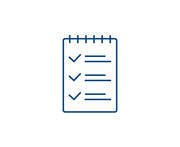Improving hygiene in pharma: 4 key areas to focus on
Proper hygiene is essential in the pharmaceutical industry to prevent contamination and ensure the quality of medicinal products. Here are the four key areas to focus on.
In the pharmaceutical industry, hygiene holds utmost importance to ensure the safety of both end consumers and employees. There are four key areas to focus on: production hygiene, personnel hygiene, plant and surface disinfection, and performance monitoring.
In this blog post, our experts share their tips on how to make sure proper hygiene is achieved in all four areas, all the way from the production floor to the end product.
1: Production hygiene requires a controlled environment
Production hygiene is the first step in making the process and end-product safe. Following these practices will help to maintain optimal sanitation standards in pharmaceutical production plants and ensure the quality of the drugs remains unaffected:
- Focus on a controlled environment: a cleanroom maintains a low level of airborne microbes, dust, chemical vapors, and aerosol particles.
- Implement the use of classical, sterile, or microbial filtered disinfectants in addition to the manual disinfection process.
- Streamline the disinfection process with a hydrogen peroxide vapor generator. These powerful machines are becoming more popular, as they provide fast and effective decontamination of the manufacturing unit and equipment.
- Ensure all cleaning equipment meets the requirements of optimal ergonomics, sterilization, and cleanroom processes.
- Check the premises carefully to identify hard-to-clean surfaces, and clean these areas with disinfectants that are lab-tested for efficacy and compliant with industry safety standards.
- Cement the storage areas and walkways to minimize the risk of spreading impurities.
- The flow of components, drug product containers, closures, labeling, in-process materials, and drug products through the building or buildings shall be designed to prevent contamination.
2: Personnel hygiene starts with the right kind of garment
Despite the measures taken to maintain hygiene for production facilities, equipment, raw materials, and product packaging, one of the primary sources of contamination is human beings. Using appropriate and hygienic workwear is crucial in maintaining high standards of safety and ultimately ensuring the wellbeing of end consumers:
- Implement the use of hygienic specialized garments in specified work areas such as production facility, storage areas, loading, and unloading unit.
- The garments prevent contaminations from particles generated by, and microorganisms shed, from the body;
- Gowns are sterilized and nonshedding, and cover the skin and hair (e.g. caps, snoods for mustaches and beards, protective goggles);
- All overlapping gown components have an adequate barrier between (e.g. gloves overlapping sleeves)Make sure there’s the right kind of hygienic specialized garments available in sufficient numbers at all times so that all personnel accessing the aseptic manufacturing are appropriately gowned. Pay special attention to that:
- Gloves are sanitized frequently and torn or defective gown components are changed immediately
- Provide education and training on the importance of hygiene and the proper way to use hygienic clothing (eg. not using the clothing when away from the manufacturing environment or using the canteen, smoking area, and toilets).
- Focus on the laundry process: it should be done only by an approved contractor or an in-house facility conforming to industry-defined criteria that validate the entire process. The following measures must be taken to ensure the highest standards of hygiene in workwear laundering:
- Clean the workwear effectively and following the industry standards.
- Make sure dirty and clean workwear are appropriately separated.
- Provide clean clothing in contamination-free bags or covers.
- Verify and validate the laundry process and improve it continuously.
Read more on the “Supply chains are helping pharma go green“.
3: Facility and surface disinfection helps fight contamination
In addition to practicing effective production and personnel hygiene, proper measures should also be taken to disinfect the facility and all surfaces. Here’s how it’s done:
- Use high-quality, industry-approved sterilization products that are tested for efficacy, user-friendliness, and occupational safety.
- Ensure the walls, ceilings and floors are washable and have no crevices; regular cleaning, scrubbing & disinfection is important to avoid impurity accumulation and spreading contaminants.
- Implement the use of high-performance hand disinfectants and dispensing systems to meet the highest standards of hand hygiene – one of the most critical preventive measures to avert the risk of germ & impurity transmission by the hands of the personnel.
Performance monitoring is smooth and easy with digital tools
Merely implementing hygiene strategies is not enough; it’s equally important to monitor the effect of the measures taken, analyze the process and improve continuously. With the help of digital tools, this can be done effectively and quickly.
- Identify problem areas and take necessary measures to eliminate the bottlenecks and improve the processes.
- Monitor hygiene performance with digital tools that give you an up-to-date view of the entire manufacturing, storage, workwear, and cleaning process.
- Utilize data to make sure the processes run smoothly and to avoid bottlenecks in the process.
- Make sure the reporting data meet BRC Global Standards.
Want to discuss, write to us at raman.shukla@lindstromgroup.com
Whatsapp 8655850710
Related articles
The essential guide to cleanroom garments
Cleanroom environments, especially in the pharmaceutical and semiconductor industries, demand the utmost precision and cleanliness. The garments worn within this...
Cost, compliance, and the case for outsourcing cleanroom garment management
Outsourcing cleanroom garments has many tangible and intangible benefits for pharmaceutical companies, says industry veteran Shyam Khante. With the global...
Pharma goes Back to Basics with Annex 1
The revised EU GMP Annex 1 puts contamination control and people’s actions centre stage in pharmaceutical manufacturing, says Ivy Louis....
Climate change requires healthcare to change its habits
Lindström India expands its service offerings to Pharmaceuticals and Biotechnology Industry by Introducing “Sterilizable/ Autoclavable Cleanroom Goggle Washing Service”
Lindström has developed a service for rental, decontamination, packing, and delivery of sterilisable/ Autoclavable cleanroom goggles – protective glasses for use...
Get the best out of your ESD garments
As the PLI scheme takes traction in electronic industry, more and more companies are aiming for India. While the need...
How Rental workwear service is helping Pharma industry to focus on core business?
Pharmaceutical Industry towards an efficient and collaborative future With the global spread of COVID 19, the Pharma and Healthcare Industry...
Supply chains are helping pharma go green
For the pharmaceutical industry, outsourcing doesn’t only mean an increase in efficiency and compliance but a way to make operations...
Pharma is heading for a collaborative future
As the demand for more efficient and compliant practices grows, pharmaceutical companies are looking into building stronger networks. The year...



